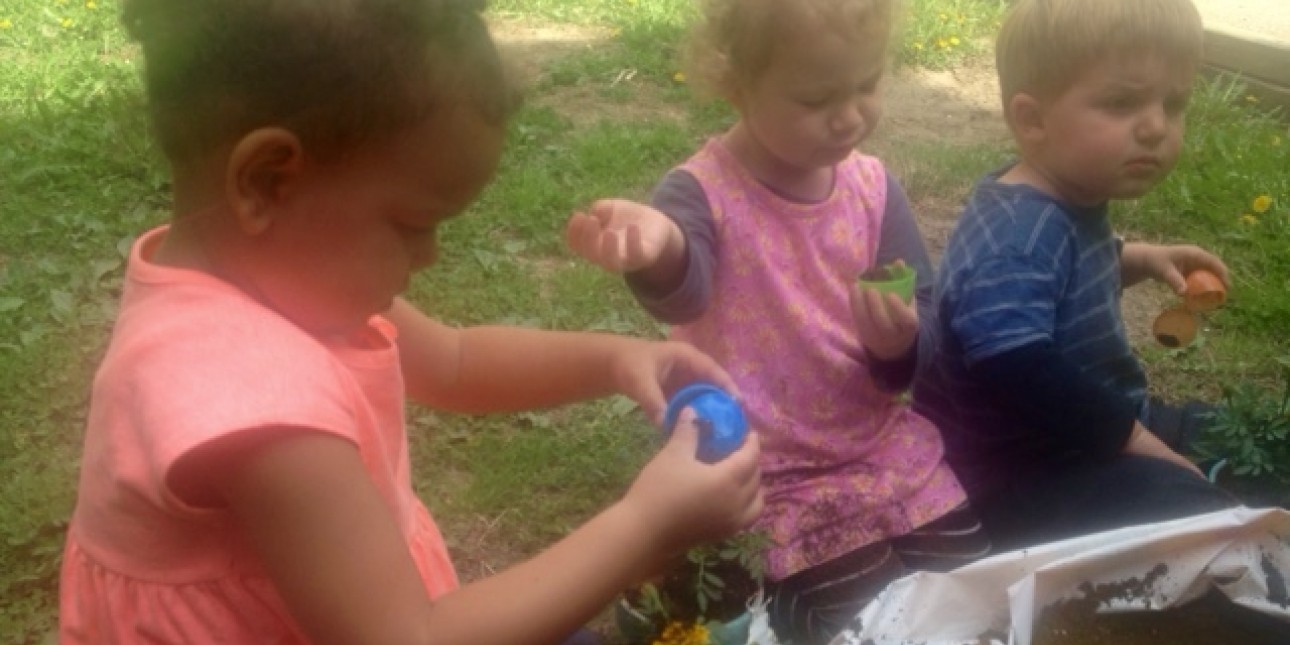May Message from Deb Green

The Importance of Critical Thinking
While on the playground on a recent picture-perfect spring afternoon, I observed a group of four and five-year-olds gathered around one of the tall trees. Apparently a stuffed animal cat had been thrown in the air and was stuck on a limb of the tree. The children had gathered to figure out how to “free” the cat. Several children gathered sticks to reach up to the limb and quickly realized that they did not have the height needed. Next they asked their teacher to individually hold them up, with the hope that the increased height would help them achieve their goal. Yet it did not work. Instead of offering solutions, their teacher said, “We need another solution. Does anyone have another idea?” One could see the wheels of their brains in motion as the children discussed more ideas. Several children threw sticks at the limb and came quite close to disengaging the cat. When that didn’t work, they began saying to one another, “We need another solution.” When a taller teacher came by, one child asked that teacher to hold him up, clearly realizing that this would give him additional height. When that idea also didn’t work, a quite-heavy picnic table was moved to under the tree by three children and more attempts were made to rescue the cat. A couple children decided to use a crate to catch. Finally a taller dad came for end-of-the-day pick-up and he, along with two other children, successfully rescued the cat with the crate.
In addition to this scene being just wonderful to watch, it so exemplified the importance of critical thinking skills. Recent research repeatedly shows that strong critical thinking skills are closely linked with later school (and life) success. Critical thinking comprises a number of different skills that help us learn to make decisions. To think critically about an issue or a problem means to be open-minded and consider alternative ways of looking at solutions. What does critical thinking look like?
An eight-month-old sees an object on the rug that he wants. He wonders how to get it.
A two-year-old notices some clay on the table thinks: "There is a lump of something that looks like playdough on the table, but it feels different. What do I do with it?”
A three-year-old wants to balance a large block on top of a tower she has built and looks at the building while thinking about how to accomplish the goal.
A seven-year-old speculates: "Several of my friends are teasing a child in our class about his new glasses. Do I join in, not participate, or tell them how I really feel about what they are doing?"
The hardest aspect of trying to help children learn critical thinking skills is to sit back and let them try to solve the problem or dilemma on their own. The following are a few ideas that you can do to help promote critical thinking skills:
Instead of directly responding to the “Why” questions with immediate answers, ask “What do you think?” or “What ideas do you have?”
When reading books to children, ask “Why” and “How” questions such as, “Why do you think that happened?” or “How can the problem be solved?”
Create “cause and effect” experiments (i.e. Why do balls roll down the ramp?, How does water turn into ice? How can ice melt?) Help children develop hypotheses by asking, “Let’s predict what we think will happen next.”
Promote children’s curiosity. Don’t jump too quickly to fix something they are struggling with. When possible, help them figure out how to resolve struggles themselves.
Model critical thinking by encouraging children to ask questions. If you don’t know the answer, consider looking it up together.
Happy critical thinking to all! I offer the hypothesis that it will be a beautiful May ahead.